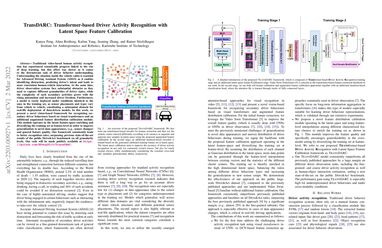TransDARC: Transformer-based Driver Activity Recognition with Latent Space Feature Calibration
Traditional video-based human activity recognition has experienced remarkable progress linked to the rise of deep learning, but this effect was slower as it comes to the downstream task of driver behavior understanding. Understanding the situation inside the vehicle cabin is essential for Advanced Driving Assistant System (ADAS) as it enables identifying distraction, predicting driver's intent and leads to more convenient human-vehicle interaction. At the same time, driver observation systems face substantial obstacles as they need to capture different granularities of driver states, while the complexity of such secondary activities grows with the rising automation and increased driver freedom. Furthermore, a model is rarely deployed under conditions identical to the ones in the training set, as sensor placements and types vary from vehicle to vehicle, constituting a substantial obstacle for real-life deployment of data-driven models. In this work, we present a novel vision-based framework for recognizing secondary driver behaviours based on visual transformers and an additional augmented feature distribution calibration module. This module operates in the latent feature-space enriching and diversifying the training set at feature-level in order to improve generalization to novel data appearances, (e.g., sensor changes) and general feature quality. Our framework consistently leads to better recognition rates, surpassing previous state-of-the-art results of the public Drive&Act benchmark on all granularity levels. Our code is publicly available at https://github.com/KPeng9510/TransDARC.
PDF Abstract


 Drive&Act
Drive&Act